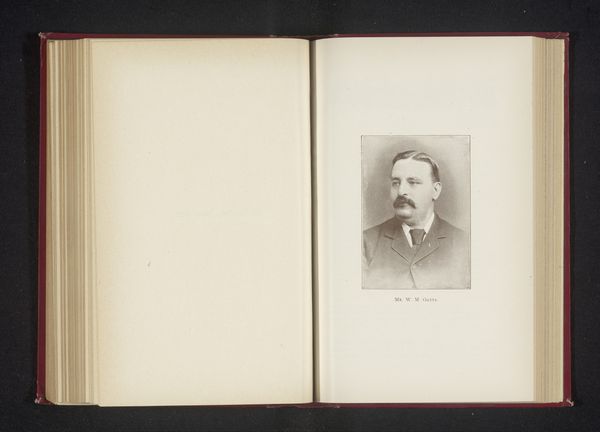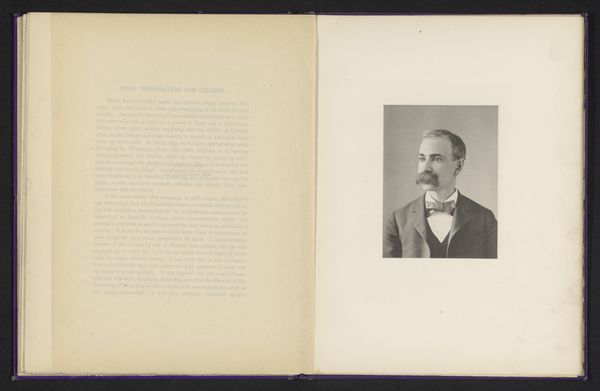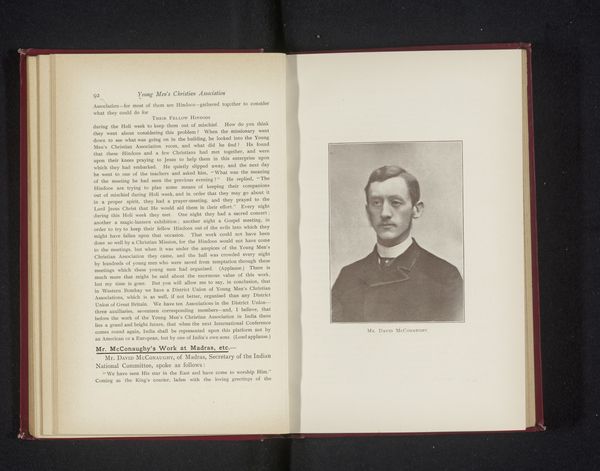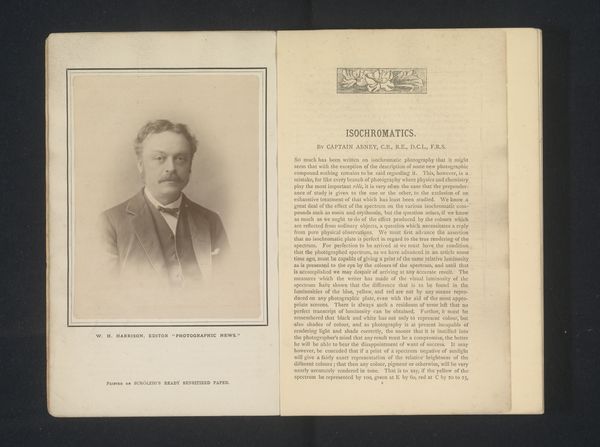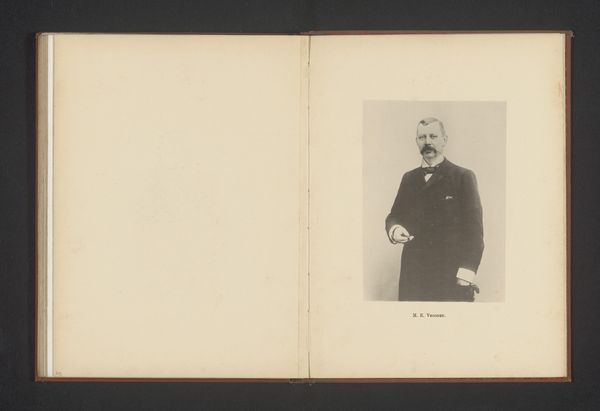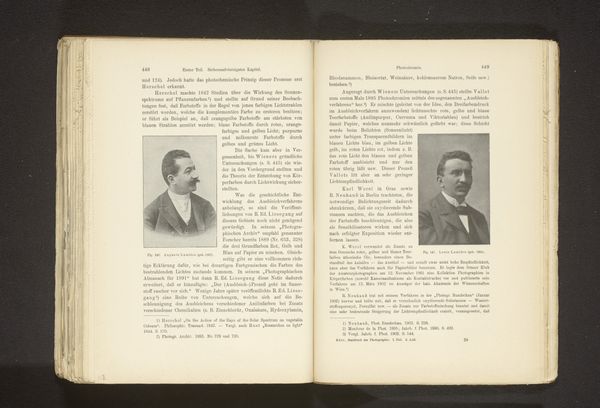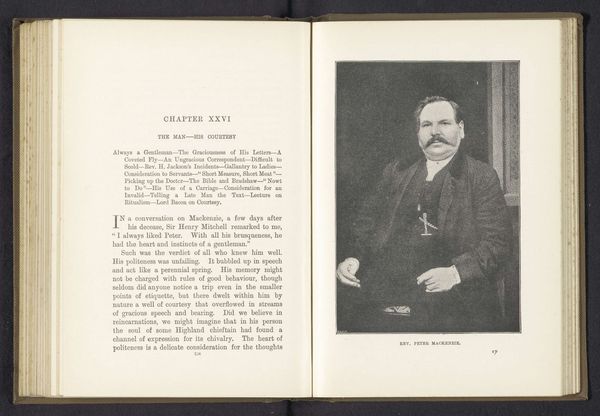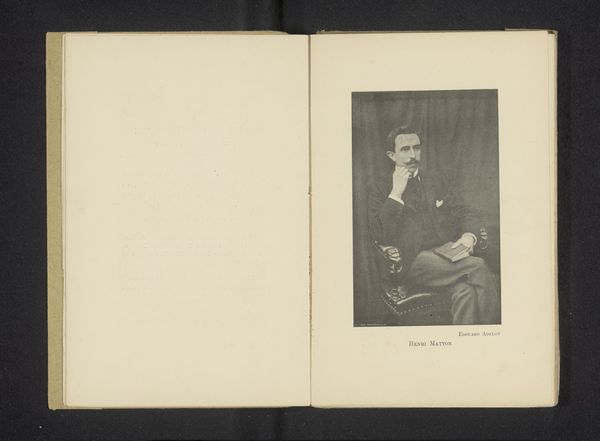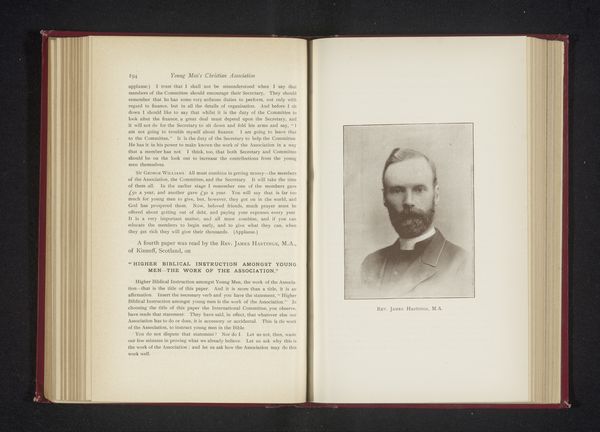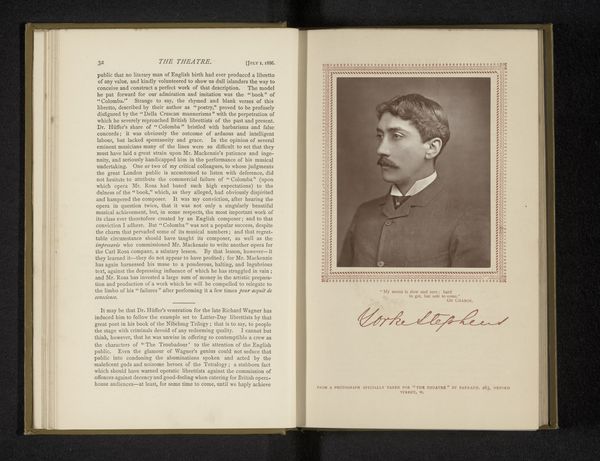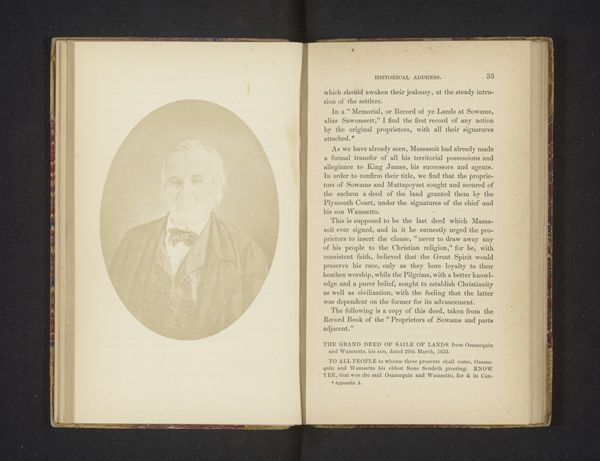
print, paper, photography, ink
#
portrait
# print
#
paper
#
photography
#
ink
#
modernism
Dimensions: height 101 mm, width 76 mm
Copyright: Rijks Museum: Open Domain
Editor: Here we have a portrait of Karl Fries, made before 1895. It looks like it's printed on paper using ink, perhaps from a photograph. What do you make of this image? Curator: It's fascinating to consider this image not just as a portrait, but as a material object deeply embedded in the social and economic conditions of its time. Think about the labor involved: from the photographer and the printer to the production of the paper and ink. Where was this paper sourced? How were the inks manufactured? Editor: I never thought about that aspect before. It’s interesting how you highlight the means of production rather than the artistic skill in the depiction of Fries’ likeness. Curator: Exactly. By focusing on the materiality, we start to understand how this seemingly simple portrait becomes a conduit for broader social and economic forces. What did it mean to disseminate images widely at this time? Consider also that the modernism tag emphasizes that it goes against traditional portraiture. Why do you think that is? Editor: Maybe, in the context of modernism, that would question art’s reliance on portraiture. Instead, focusing on its materiality and modes of production makes it more egalitarian by showcasing labor, challenging fine arts boundaries. Curator: Precisely. This image prompts us to think about the relationship between representation and production, challenging the traditional hierarchy of art. Editor: This has opened up a new way of viewing art for me – appreciating the art for its materiality rather than just symbolic significance or artist's skill. Curator: And for me, revisiting familiar forms with a new lens always allows me to unearth how the materiality shapes not just how the work looks but how it circulates in the world, as well as who gets to participate in the processes.
Comments
No comments
Be the first to comment and join the conversation on the ultimate creative platform.
